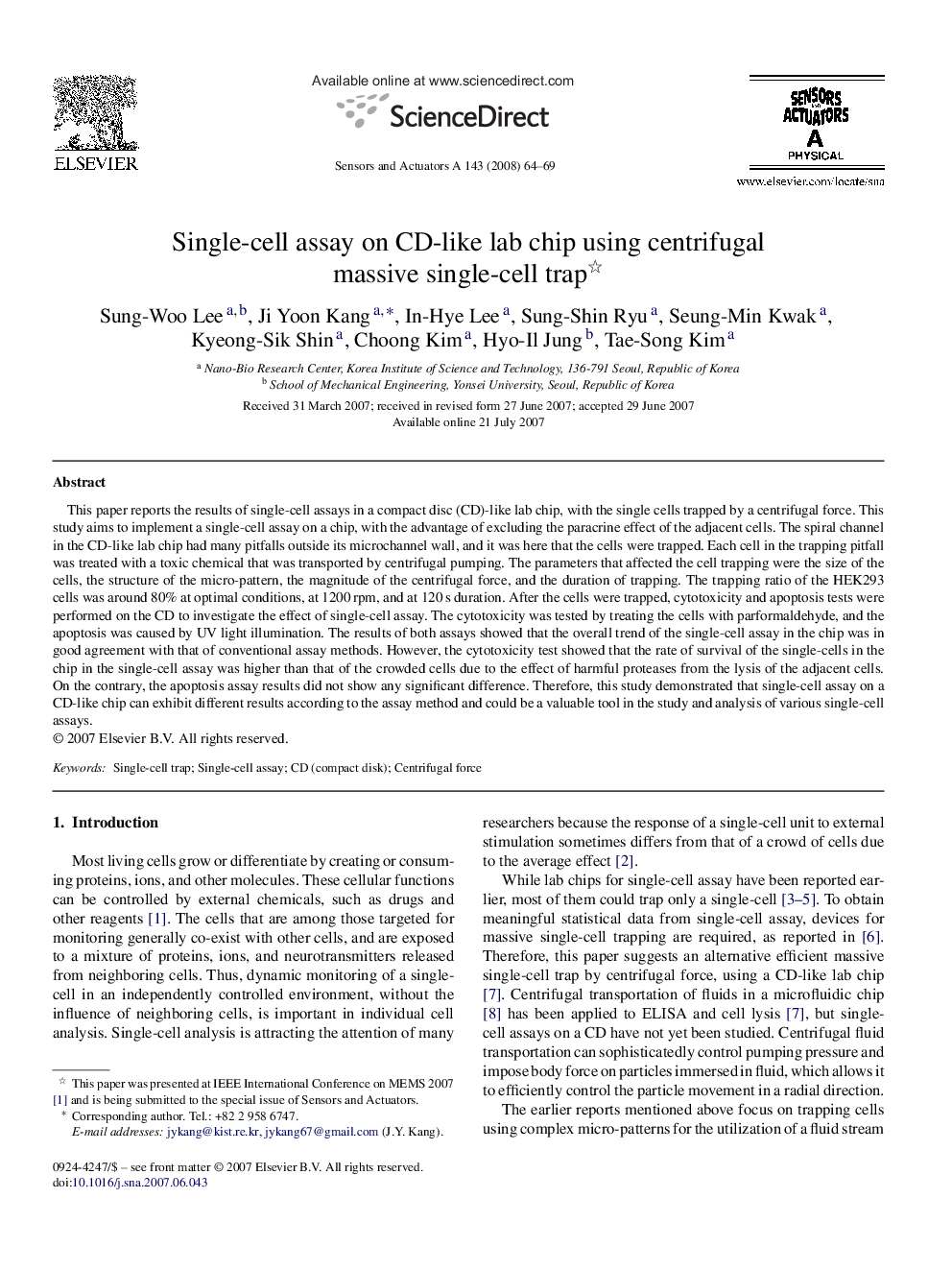| Article ID | Journal | Published Year | Pages | File Type |
|---|---|---|---|---|
| 737296 | Sensors and Actuators A: Physical | 2008 | 6 Pages |
This paper reports the results of single-cell assays in a compact disc (CD)-like lab chip, with the single cells trapped by a centrifugal force. This study aims to implement a single-cell assay on a chip, with the advantage of excluding the paracrine effect of the adjacent cells. The spiral channel in the CD-like lab chip had many pitfalls outside its microchannel wall, and it was here that the cells were trapped. Each cell in the trapping pitfall was treated with a toxic chemical that was transported by centrifugal pumping. The parameters that affected the cell trapping were the size of the cells, the structure of the micro-pattern, the magnitude of the centrifugal force, and the duration of trapping. The trapping ratio of the HEK293 cells was around 80% at optimal conditions, at 1200 rpm, and at 120 s duration. After the cells were trapped, cytotoxicity and apoptosis tests were performed on the CD to investigate the effect of single-cell assay. The cytotoxicity was tested by treating the cells with parformaldehyde, and the apoptosis was caused by UV light illumination. The results of both assays showed that the overall trend of the single-cell assay in the chip was in good agreement with that of conventional assay methods. However, the cytotoxicity test showed that the rate of survival of the single-cells in the chip in the single-cell assay was higher than that of the crowded cells due to the effect of harmful proteases from the lysis of the adjacent cells. On the contrary, the apoptosis assay results did not show any significant difference. Therefore, this study demonstrated that single-cell assay on a CD-like chip can exhibit different results according to the assay method and could be a valuable tool in the study and analysis of various single-cell assays.
